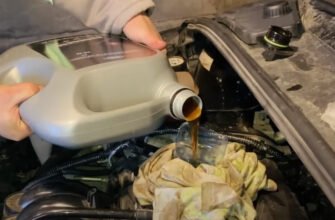Ford F150 heater issues are not very common but they do happen and if you’re experiencing such a problem, you’d be delighted to know that there are quite a few fixes you can apply and get everything back in order.
In most cases, a Ford 150 heater not working problem would be due to neglect and the lack of proper maintenance. This is most common with individuals that barely make use of the heating and cooling system.
Since both the heating and cooling system are linked, a problem with the heater could also mean that you would be experiencing issues with the air conditioning system as well.

In this guide, you will find all the possible causes of your heater problem and the fixes that can be applied to get things back to normal.
Ford F150 Heater Not Working: Likely Causes
- Low level of antifreeze
- Faulty water pump
- Faulty thermostat switch
- Bad coolant hoses or loose clamps
- Clogged heater core internal passages
- Faulty heater valves
- Radiator leak
- Defective thermostat
- Presence of airlock
- Faulty wiring or a blown fuse
- Clogged heater core exterior
Ford F150 Heater Not Working: How to Fix
Check the Coolant Level
If the coolant or antifreeze level drops too low, the heater core won’t get enough warmed coolant to produce just the right amount of heat. This is the most likely problem with your car’s heating system. And thankfully, it is quite easy to fix. All you would have to do is purchase a new coolant and top it to the proper level.
If topping the coolant doesn’t fix the problem then you need to check for leaks. The coolant hose might be cracked or the clamp came loose. In some cases, it could be a more serious problem like a head gasket leak. Check to confirm everything is in order and fix any faulty components. The coolant is very important to the engine as it helps it to keep cool and prevent damage due to overheating.
Check for Radiator Leaks
This will most likely cause a problem if you’re using an older model. If you notice puddles of coolant under the front of your car, it would be a sign of a radiator leak. Also, check for a wet area on the radiator. This is a serious problem that needs immediate attention. You should have your mechanic take a look at the car. In some cases, the radiator could be repaired but you might be asked to shop for a replacement.
Check for a Bad Radiator Cap
The radiator cap acts as a type of pressure regulator. It regulates the pressure in the vehicle’s cooling system. In the event that the pressure gets too high, it will act as an escape valve to bring it back to normal. If the radiator cap sticks in the open position, there will not be enough pressure in the system so the coolant will not get hot enough which will reduce the heat output.
If you’re able to pinpoint the radiator cap as the fault in the system, then you would have to get it replaced.
Check the Water Pump
If you’re using an older version of the Toyota Camry, then you would have to check the water pump. This component is designed to circulate the coolant throughout the engine and the heater core. If it fails, you won’t be able to get enough heat entering the cabin. The water pump could be a source for leaks and cause inadequate coolant circulation.
Performing a visual inspection of the water pump will reveal any problem that needs fixing. You should have your mechanic check the water pump if it is working fine. If it is not, then you might have to replace the water pump.
Fix the Thermostatic Switch
Depending on your vehicle model, it should have a thermostatically controlled electric fan that comes on when the vehicle’s engine needs additional cooling.
If the thermostatic switch is faulty, the fan would run continuously which will reduce the coolant temperature to the level where you won’t get enough heat entering the cabin. If the fan runs continuously even from a cold start, you would be having the problem of a defective thermostatic switch.
To solve this, you would have to get the thermostatic switch replaced and the heating system would go back to normal.
Clean the Heat-Radiating Fins of the Heater Core
This is similar to having clogged heater core passages but for this fix, you could actually get the problem solved without seeking the help of a professional. The heat-radiating fins on the exterior of the heater core could get clogged with debris coming in from the outside air intake. With the fins clogged, you would experience issues with the heat output.
If you’re able to access the heater core on your own, then you can clean the debris from the fins and the air intake passages. This should solve the problem and your heating system would be back to normal.
Other Fixes to Try Out
- Check the Blower For Issues – The blower fan could be faulty due to a blown fuse, bad wiring or would have to be replaced
- Faulty Heater Valves – The heater valves control heat generation and could hinder heat production. Your mechanic would fix or replace the valves if necessary
- Flush the Heater Core’s Passages – If the heater core’s passages are clogged, you would have to get a mechanic to flush the passages or replace the heater core
- Check for Faulty Coolant Hoses or Loose Clamps – If the coolant hoses have deteriorated or the clamps are loose, you won’t get much heat. Replace the hoses and tighten the clamps, then check the results.
Final Thoughts
Some of the fixes listed here can be done by you without the assistance of a professional while others would need a mechanic to handle them. If you’re not good with technical components or car issues, it would be best to leave the fixing to the professionals as this would produce the best results.







